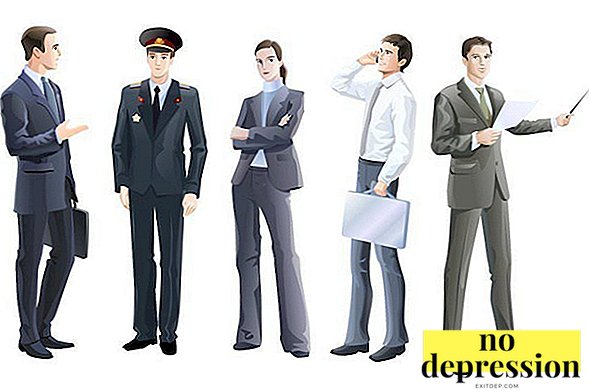The manner of communication has a direct impact on how effective is the interaction with the interlocutor.
Properly using this "lever" you can attract others to yourself.
Definition of concepts

What is the style of communication?
Communication style - is a form of communicative behavior of the individual, characterized by the stability of manifestation.
Communication style can be traced in any conditions of human interaction with others, as he individual for everyone.
The concept combines the norms, methods, patterns of behavior, rules, principles and other features of communication. The foundation for the formation of style are moral and social attitudes.
Manner of communication - it is a unique and individual for each individual person a way to use the voice and body to perform speech communications. It is determined by voice tone, behavior during interaction, and distance.
Manners are inextricably linked with the style and for the accurate characterization of the personality (and its communication skills) are considered in pairs.
What are the manners of communication?
Concept "Manners of communication" built on the following elements:
- tone of narration (calm, restless, agitated, friendly, imperative, etc.);
- distance (intimate, personal, social or public);
- behavior (confident, arrogant, modest, fettered, etc.)

Manners can be divided into two basic groups:
- Bad manners. All forms of behavior that cause others negative emotions, discontent and irritation. This can be attributed to curses, rude attitude towards the interlocutor, dismissive tone and so on.
- Good manners. Forms of behavior, with the help of which a person draws an interlocutor to himself and makes sure contact. A vivid example is politeness, ability to give in, ability to listen, attentiveness and so on.
Categories of good and bad manners do not have a clear framework. Everything depends on the society, standards, norms and rules adopted in the given territory.
The concept of "bad" and "good" manners is unique even for a single social group (working team, class, company of friends, etc.).

Manners can be serious, humorous, benevolent, embittered, etc.
The variety of manners is due to a wide range of verbal and non-verbal signals that a person can use.
Style classification
Psychologists distinguish three communication styles:
- flexible (confident orientation in society, the ability to assess and feel the mood of the interlocutor, catch the thought and decipher the information coming from the interlocutor);
- transition (mixed type, which includes features of both flexible and rigid);
- rigid (inability to quickly navigate in society, inability to analyze behavior, poor ownership of means of communication).
Communication style influences what means of communication an individual will use during communication.
There are five basic groups.:
- Linguistic (speech).
- Kinetic (facial expressions and gestures).
- Paralinguistic (voice feature and its “settings”);
- Extralinguistic (speech themes, pause length, etc.);
- Spatio-temporal (situation, place and time, distance between interlocutors).

The main communication styles presented below are: aimed at achieving certain results.
At the same time, the effectiveness of verbal communication depends on how well a person owns the psychotechnology of speech (intonation, diction, and the laws of logical construction of the message).
Types of pedagogical communication
Pattern for this group of steel typical communication styles of a teacher with a student. How does a teacher who works with a student understand his goal? How does he present knowledge and explain topics? Does the teacher consider the student's communication style?
- Authoritarian. In this case, the teacher assumes the right to independently resolve emerging issues. They can relate to the student's behavior, his relationship with other students, and even personal moments that concern only students. It is difficult to interact with such a teacher, despite his propensity to care for the wards. The teacher is a dictator in some way, often considering the initiative as an excuse for punishment. The teacher does not analyze the behavior of others, therefore, the true motives of actions are unknown to him.
- Democratic. The teacher seeks to provide all possible assistance to students, to reveal their talents and hidden opportunities. The main support for the teacher - cooperation with the wards. Student initiative is encouraged and encouraged. In case of a misunderstanding of the material, the teacher must stop and re-explain the incomprehensible moments. The teacher understands the causes and motives of actions, but at the same time focuses only on positive actions. He can predict the vector of development of the ward, since he "feels" the pupils.
- Liberal. The teacher does not want to take responsibility for the students. He is limited only to his immediate duties, fulfilling them reluctantly, but in full. The indifference of the teacher leads to the fact that it becomes extremely difficult to control the wards.
A passive attitude leads to a deterioration in academic performance and social climate in the classroom.

Types of business communication
Business communication is used in the case when people participate in joint activities in order to achieve certain results. At the same time, the activity participants try to retain any status (team member, leader, etc.) and achieve acceptance of this status by society.
- Ritual. This style can often be seen in teams where people have long known each other. They operate according to a long-established and well-established scheme, because of which each interaction is similar to the previous one. Team members from time to time raise the same topics, give out their "brand-name" reactions and are absolutely predictable for each other. However, ritual communication brings people satisfaction not at the expense of filling, but at the expense of quality. Indeed, as a result of the usual set of phrases, actions and reactions, people become stronger in their own position, they feel that they are part of a group and a significant element of society.
- Manipulative. The manipulative style is used when it is necessary to use another person to achieve personal goals. At the same time, the participants of the “directed movement towards the result” may have different ideas about the final goal and its ethics. And the individual who is being manipulated can guess or not guess his position. The manipulative style is not always associated with negative.
Very often, thanks to the manipulations, it is possible to achieve well-justified and worthy goals, to include a passive team member in the work, or to prevent serious problems.
- Humanistic. In humanistic communication, personal relationships come to the fore. The person is looking for support in his interlocutor, waiting for attention and advice. This style of communication is built on the sincerity and mutual suggestion of positive attitudes. A person can choose as an interlocutor and reveal himself not only to close people, but also to those who trust in unfamiliar people.


All the above styles are related to business communication.
When communication occurs on a personal plane, it is used. individual communication style.
An individual style of communication is a kind of innate tendency to mix all styles in certain proportions, using the resulting “cocktail” during interpersonal contacts.
To meet any style in its pure form outside the classification (in real life) is impossible. Due to personal qualities and psychological peculiarities, a person skillfully juggles with various styles.
And the higher the sensitivity of the individual to the mood and feelings of the interlocutor, the more active and “thinner” he will go from one to another, in order to maximize productivity during the interaction.
Satisfaction with the result of communication

What style of communication gives the most satisfaction?
It is difficult to distinguish the style that brings the most satisfaction with the result of communication.
Each of the existing styles closes a specific set of needs.
So thanks ritual communication people feel important, identify themselves as a member of the team and are convinced of the weight of their own place and opinion. And even if there is no diversity in communication, the members of the group are satisfied.
BUT humanistic style helps a person close the need for support and empathy. The interlocutors share experiences, fears, secret thoughts and feelings, receiving in response a real (genuine) reaction that they need.
Manipulative style can provide satisfaction unilaterally or bilaterally. But more often than not, one party gains the benefits.
At the same time, if we consider satisfaction without a bond with morality, this style of communication is quite successful. closes the actual needs of the individual.

But if you consider communication simply as the interaction of two people, without considering the goals set during communication, then the most favorable for the emotional state will be humanistic communication style.
He, as the most personal, allows you to get understanding and support, compassion and empathy. In the process of such contact, there is a complete “transformation” of ideas due to mutual conviction.
And even if the interlocutors initially did not pursue the goal of strengthening their self-esteem and faith in their personal potential, as a result of communication this effect will still be achieved.
Each style of communication can be relevant and relevant, if properly approached the choice. Conscious control over their manner and style of communication can improve efficiency, strengthen social ties and achieve their goals.
At the same time, the ability to mix styles will positively affect the results of interaction with others.
Communication styles and types:



